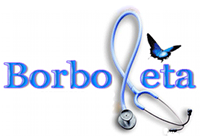Project Research Themes
The Borboleta project has the following research themes:
- Mobile Electronic Health Record applied to Primary Health Attention
- The main technological goal of the project is to develop a efficient system capable of store multimedia information (numeric data, text data, photos, audio, and video) on mobile devices and applied to primary health care public programs. Aiming to improve the quality of the Healthcare Public Service provided by Brazilian Healthcare Service System (called SUS) through the optimization and agility to access the information of the patients that are served by these programs.
- Conceptual modeling of primary health care in the Brazilian Unified Health System
-
Development and validation of a conceptual model of an information system for primary health care. First, this model aims to incorporate the specifities of this level of the health system, allowing the information system to go beyond a too general conception of the health work. Moreover, the availability of such a model helps in the dialogue between the development team and the health team, and facilitate the maintenance of consistency in the construction of different components.
The responsibility of this development has permitted, as a secondary gain, to consolidate within the CSEB a team dedicated to issues of Information and Communication in Health, which coordinates activities of related sectors, which had somewhat fragmented practice. The sectors of Informatics, Archive and Information and Communication, Information and Health Surveillance have been operating under the coordination of the Technical Director of the health service, as a Information and Communication Group, responsible for coordinating all actions concerning the Butterfly Project. - Evolutionary database in agile methods
- Data modeling in agile methods requires database evolution due to the frequent changes in application requirements. The challenge is greater when the database must support multiple applications simultaneously. The current solution in agile methods for evolutionary databases is refactoring with a transition period, during which both the old and the new database schema are used in parallel and data is replicated via a synchronous process. The research in this theme makes possible to develop a tools to implement an asynchronous process to keep these schemes updated and facilitating the evolution of the database. More information can be found in Database Evolution.
- Information Privacy and Security in Mobile Devices
- In the Borboleta Project, the wireless medical information transmission needs to address privacy and information security. As PDAs have low processing power and low-bandwidth connections, it requires special algorithms in terms of speed and security level. Therefore, we studied methods of authenticated key agreement based on elliptic curves, that allows privacy and data security of Borboleta.
- Synchronization of mobile databases
- The online access to health center's database by PDA's is impractical, due to high cost of data transfer service, signal instability, and service unavailability in remote regions. The alternative is partial data replication in the mobile devices. With this replica of the data, the health professionals can go to the patients' homes and do their work. At this moment, read and write operations are performed on the replica. Later, when the professional is back to the health center, an integration process will be necessary to synchronize PDA and health center databases. The present work aims to develop algorithms and protocols to identify and resolve conflicts during data integration process the more automated possible.
- Transmission of multimedia over wireless networks to smartphones
- Research on the effective IP communication capacity of smartphones; we focus on latency and bandwidth characterization of IEEE 802.11 multimedia communication using smartphones.
- Data mining healthcare information
- We are working on the applications of data mining techniques to search patterns in historical records of clinical data. Such patterns may unveil important information related e.g. to epidemiology, and provide guidance for problem solving and prevention in healthcare.
- Human Computer Interaction & Automatic Speech Recognition
- Automatic speech recognition will be used to augment the human/machine interface and improve data mining input. First, development of smart navigation schemas on the mobile devices will incorporate voice commands, allowing healthcare professionals more time during visits to focus on patient needs. We will use an embedded small vocabulary speech recognition system. Second, to support data mining, spoken records and detailed histories will be collected and converted to text. The current form of data collection is handwritten notes on paper. Speech-to-text conversion will be done via a large vocabulary speech recognition system using a vocabulary expanded with medical terminology. More information can be found in Speech Recognition.
